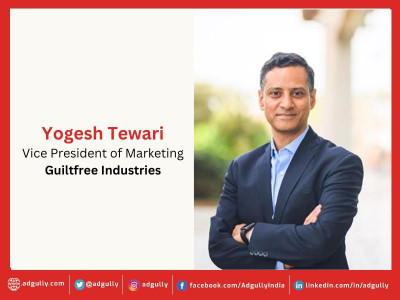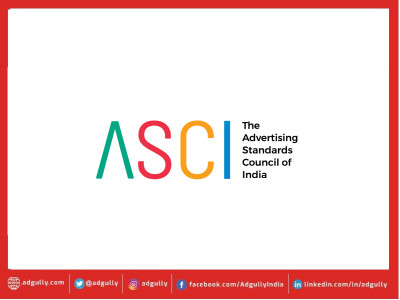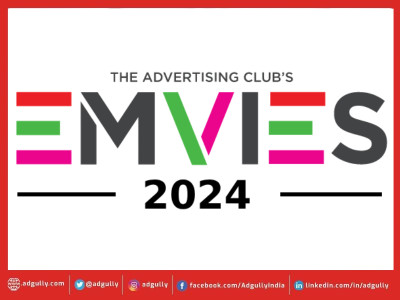Why the mobile lockscreen is the next big thing for brands
India today is in the middle of a huge content revolution, whether it is gaming, shopping, binge-watching, consumers want all their needs and requirements to be fulfilled instantly. So, we are not only calling them Gen Z, but Gen Now. Mobile as a platform is very well placed to address the needs of this Gen Now. MMA IMPACT India Day 1 saw a panel discussion on ‘Why the lockscreen is the next big thing for brands’. This panel was moderated by Vasuta Agarwal, SVP and GM, Consumer Platform Advertising, InMobi, and she was joined by Sneha John, Director, Marketing, Swiggy; Steve Vinod, Senior Marketing Manager, Sales Marketing Lead, Meesho; Diptakarti Chaudhari, VP - Marketing, Bajaj Auto; and Atul Sharma, Media Lead, Cola Company.
Commencing the discussion, Vasuta Agarwal noted that, “We actually see that every day on the lock screen of 173 million users of Glance in india, brands have the opportunity to engage with these users in very neat content experiences and interesting formats, through games, through polls, through quizzes.”
Agarwal asked the panelists, with the 800 million smartphone, Internet user base in India, how are you thinking about your brand and rethinking about mobile marketing, when it comes to connecting with these Gen Now consumers?
Steve Vinod replied, “It’s been a journey for all of us to understand and adapt. We have found a lot of new possibilities. The way that I actually think about this is how many possibilities and opportunities can be created for the consumers.”
According to Vinod, it is about making those connections and opportunities, when possible, with the right kind of touchpoints. “I think all of us in some part and form try to understand what works and what does not. It is going to be a journey, we are going metamorph into much larger opportunities for marketers,” he added.
Atul Sharma added here, “I think the primary consideration for us to move forward over time has always been scale, and when we spoke of personalisation, somewhere down the line we always had the filter in our minds. Some of this is also getting reflected in the exponential growth in investments for engaging in digital platforms, 80-90% of that must be mobile. It has been very stark.”
Recalling the times 15 years back, Sharma said, “It was almost like 2-5 % and going upwards to 25% for C2G brands, where television seemed to be the primary source.”
Adding further he said the the majority had to be addressed at three levels. “Most important is going to be getting the basics right. When you are talking about mobile, the medium itself changes. So, whatever you are going to do, it has to be mobile first and, therefore, it has to be around UX, UI platforms that are going to be addressed – because what works well at one place, might not work well here. The second part is that exposure is not going anywhere. What you plan to do beyond exposure is going to get engagement. Moreover, the nature of the engagement is really important. Whether you are talking about events, content, duration, gaming, that’s the second level. The third level is to unlock the long term value, which is either about monetisation, or creating ‘impressability’ for the audiences – the entire ecosystem that we are trying to create and it starts working in some kind of loop. These are the three things that we need to work on to get where we want to get.”
Sneha John added here, “We are a delivery product and have been deploying mobile marketing. What has changed over the last few years is starting with the objective that we go after, and it has to also deal with marketing the brand lifecycle. Being an Internet product, it is plain math that we need to use at the platform. The second is that the GenZ attention span is 8 seconds, and they are also being targeted with a barrage of information. I think it was always critical that creators need to be clutter breaking. We need to rethink about how hard it is to engage today’s generation. For instance, memes, gifs, etc., all blend very well into the mobile marketing ecosystem. The third is in terms of media placements. If we look at media consumption habits, for GenZ, the top passion points lie in music, content, gaming, and all of these are very heavily skewed in the mobile marketing ecosystem. We need to be able to speak to these consumers in a contextual and scalable manner.”
Diptakarti Chaudhari noted that the biggest difference that we see is that nothing is exclusive anymore. “If you watch television, you watch television. Mobile is the second layer to everything – when you are watching television, you might still be doing something on your phone. When you read something interesting in the newspaper or see any ad in the paper, you will take up your mobile to do the next set of things. I feel that this is an important field, but the attention is no longer exclusive. We have moved from a point where we say that you now consume X media, where there are X, Y, Z media bombarding and the customer is picking one. Therefore, one of the important aspects of mobile marketing is to capture the creative and media strategies and break through the clutter. We need speak to the consumer in very simple terms. As an auto manufacturer, we know that an automobile is not an impulse buy or quick buy. Therefore, we have to see that mobile acts as sort of a bridge going from point A to point B.”


















Share
Facebook
YouTube
Tweet
Twitter
LinkedIn